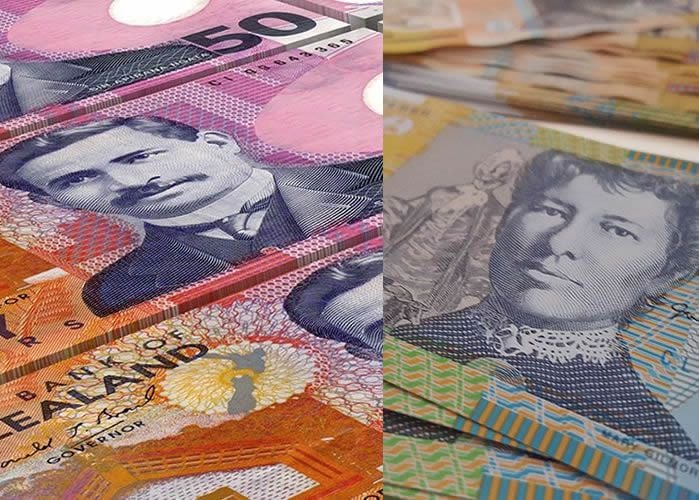Australian, New Zealand Dollar Forecasts Upgraded at ABN Amro
- Written by: Gary Howes
-

An update to their set of exchange rate forecasts see ABN Amro turning more positive on the commodity currency bloc.
The Aussie and kiwi dollars have taken a decline ahead of the Easer weekend with the AUD/USD tumbling from last week’s eight-month peak.
"Markets are starting to take more seriously the prospect of a U.S. interest rate rise as early as next quarter which has led to a resurgence in the U.S. currency. The stronger greenback inherently puts downward pressure on Aussie-influential commodities that are priced in the U.S. currency," says Joe Manimbo at Western Union.
Regardless of the near-term action, the outlook remains positive for the AUD and NZD with markets and analysts alike turning more positive.
ABN Amro are the latest to announce an update on their currency expectations for 2016 through 2017 and one of the stand-out changes pertains to their stance on the New Zealand and Australian dollars.
The two currencies were under pressure heading into 2016 but a change in circumstances has meant the NZD and AUD are two of the year’s best performers.
It should come as no surprise then the bias will be positive when analysts revisit their previous assumptions on the two.
“We think that commodity prices and currencies of commodity exporting countries have
bottomed out. Higher commodity prices will initially improve the sentiment towards commodity exporters and their currencies. Later on, this will be felt in their economies,” says Georgette Boele, Co-ordinator of FX & Precious Metals Strategy at ABN Amro.
The analyst now expects commodity currencies like the Australian dollar (AUD) and New Zealand dollar (NZD) to be more resilient due to their demand as an attractive destination for the carry trade.
The carry trade refers to the process whereby investors borrow money where interest rates are low and invest where they are high.
In doing so they push down the value of the currency from where they are borrowing while bidding up the destination’s currency. Record-low interest rates in the UK, Eurozone and Japan make the GBP, EUR and JPY all susceptible to losses against AUD on this basis.
Indeed, it has been going on for years now, ABN Amro are arguing that the process will be reignited despite both Australia and New Zealand cutting interest rates over the course of the past two years.
Australian Dollar Forecasts Upgraded
Interestingly, ABN Amro say they believe the Reserve Bank of Australia is likely to lower the Official Cash Rate, a move that is not priced in by financial markets, and therefore the Aussie.
This is clearly a downside risk for the Australian dollar exchange rate complex as it suggests demand for AUD in the carry trade will be diminished.
The Fed is to keep monetary policy rates unchanged, a lower rate profile than implied by Fed funds futures, which ABN Amro warn could result in price swings between 0.71 to 0.80 in AUD/USD over the course of this year.
Analysts have also pointed out that the US dollar’s period of strength is now at an end, something that should prove supportive to currencies such as the AUD.
Iron ore prices, Australia’s key commodity export, have risen sharply this year, which has provided strong support to AUD/USD and should do so going forward.
From current levels ABN Amro expect prices to move sideways, whereas before the Aussie was forecast to decline.
Analysts have upgraded their year-end target on AUD/USD from 0.65 to 0.76.
The conversion is predicted to rise to 0.77 in early 2017 and rise to 0.80 by the end of the year.
New Zealand Dollar Resilience But RBNZ a Risk
“The NZD is also expected to be more resilient as financial markets have priced in our view
that the Reserve Bank of New Zealand (RBNZ) is likely to cut the OCR by 25bp later this
year,” says Boele.
Nevertheless, the RBNZ is expected to remain dovish given the strength in the NZD, while dairy prices remain weak.
“Hence that should cap the upside in NZD,” says Boele.
The NZD to USD exchange rate is forecast to rise to 0.68 by the end of 2016, up from current levels of around 0.66.
This then rises to 0.69 and 0.72 in 2017.
